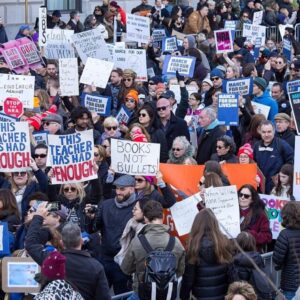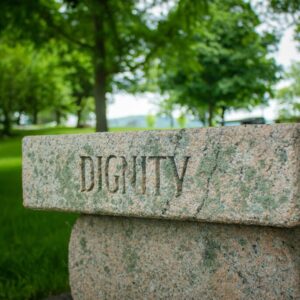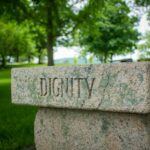
Across the country, Black, Latine, Indigenous, and Asian American and Pacific Islander communities that were being priced out of their neighborhoods—displaced by speculation, rezoning, and outside interests—are now deciding what gets built and who benefits from it. While traditional development models continue to center investors, communities themselves are asking different questions: What does it look like when we own the land, the kitchen, the market, the farm?
Owning space—whether for housing, business, or agriculture—is a critical piece of communities’ resistance and long-term stability. To have a say on what gets built and who it is for, shapes more than just housing, it determines its communal purpose: whether there’s a place to buy groceries, whether food businesses can afford to operate, and whether neighbors have spaces to gather, grow, and connect.
Space isn’t just a physical location but rather the foundation for resilience, cultural expression, and long-term autonomy.
In many of the same communities facing displacement, space isn’t just a physical location but rather the foundation for resilience, cultural expression, and long-term autonomy. And disinvested communities, by owning their own spaces, have the chance to build something lasting and make systemic change—as the community examples that are featured here from Chicago, Los Angeles, and Durham demonstrate.
Community Building in Chicago
“For us, it’s not just the building. It’s also the blocks where people live. It’s the corridor. It’s a holistic plan to preserve what we know our ancestors, our grandparents, our great-grandparents built,” said Asiaha Butler, founder of the Resident Association of Greater Englewood (R.A.G.E.), a community-led organization in Chicago working to prevent displacement by reclaiming land, supporting resident ownership, and creating pathways for local economic development.
R.A.G.E. is part of a growing community ownership movement to reclaim land and protect neighborhoods from extraction. Faced with rising costs and the collapse of conventional safety nets, organizations on the frontlines of food sovereignty, housing justice, and community development are forging their own solutions—securing land, restoring local infrastructure, and anchoring cultural spaces.
The path to community ownership isn’t easy, however. Real estate development tends to operate on fast timelines and rigid expectations—rarely aligning with the slower, community-centered processes required for lasting change. Community-led ownership projects are routinely stalled by bureaucratic hurdles such as inaccessible financing and predatory terms from traditional funding streams. Traditional funding systems—from commercial banks to even some philanthropic and community development finance institution (CDFI) channels—often replicate the very extractive models that created these inequities.
In Chicago, the RE-UP at 59th and Racine development, led by R.A.G.E., is an 8,800-square-foot commercial property that aims to serve as both the organization’s headquarters and as a hub for Black-owned businesses in the Englewood neighborhood. RE-UP is short for R.A.G.E. Economic Upliftment.
Motivated by a desire to revitalize the corridor, R.A.G.E. created two limited liability companies under its control to manage the property, minimizing financial risk, while maintaining community stewardship.
“What if we got an actual commercial property and incentivized Black-owned businesses to come into our area?” Butler told NPQ. “Could we do this? Could we actually revitalize our own corridor?”
In a neighborhood facing $90 million in redevelopment of the Englewood Nature Trail and the Englewood Agro-Eco District nearby,, R.A.G.E.’s physical presence is both symbolic and strategic, anchoring the community against displacement and inspiring residents to pursue ownership themselves. The project is currently in its pre-construction phase and backed by a mix of public and private capital.
Preventing Displacement in Los Angeles
In South Los Angeles, the Biddy Mason Project, led by Community Services Unlimited (CSU) in partnership with Conscious Capital Investment, offers another community ownership example. The project is designed to build prefabricated homes that residents can purchase, alongside an edible farm and a transportation hub with electric-powered cars and bike rentals.
Organizations on the frontlines…are forging their own solutions—securing land, restoring local infrastructure, and anchoring cultural spaces.
As Dyane Pascall, president of Conscious Capital Investment, explained to NPQ, the project isn’t just addressing the current housing shortage—it’s about acting in advance to block an otherwise highly anticipated wave of displacement expected to hit South Los Angeles with the 2028 Olympics, especially along Vermont Avenue, a major thoroughfare slated for new transit and investor attention.
Named after Bridget “Biddy” Mason, a philanthropist and founder of the oldest African American Church in the city, who was born to slavery and gained her freedom to become one of the first Black landowners in Los Angeles. The Biddy Mason Project honors her legacy of caring for and uplifting the community, while pushing back against the same forces of displacement and commercial development that eventually overtook her land.
“When the Olympics come, cities and investors [will] put tons of money in places that haven’t historically been invested in,” said Pascall. “It makes the cost of living go up. We want to make sure that what happened to Biddy Mason’s land doesn’t happen again.”
By securing property along a major transit corridor, CSU is ensuring the neighborhood remains in community hands rather than becoming a target for speculative outside investors.
Building Business Ownership in Communities of Color
Communities in Partnership (CIP) in Durham, NC, offers a third example of a community-ownership project. Its focus, like R.A.G.E. in Chicago, is to help business owners remain in their neighborhood.
Courtney Smith directs the Culinary Femme Collective at CIP, which supports entrepreneurship with local and femme-led businesses of color working in the food industry.
The program is highly successful, however, because CIP leases the commercial kitchen and community space where much of its culinary programming is housed, they’re often forced to navigate restrictions that limit how—and for whom—the space can be used.
“We’ve had to turn food entrepreneurs away because of how many people we’re allowed to have in the space,” Smith explained. “It’s like putting a Band-Aid on a gaping wound.”
From insurance liabilities to capacity limits, the constraints of renting impact directly the community’s ability to build wealth.
To build capacity, CIP has secured several properties, including residential units, a commercial space, and a building that now houses a Montessori school, showing what’s possible with patient, community-aligned funding.
Making It Happen: The Role of Community-Controlled Funds
Without flexible and patient capital, community-led organizations are often forced to mold their visions to fit external funding structures, rather than building models rooted in local self-determination.
Community-controlled funds (CCFs) leverage foundation grants; long-term, low-interest loans; and other donated capital to offer a non-extractive economic mechanism that can help groups finance community ownership. CCFs, like those stewarded by Equitable Food Oriented Development (EFOD) and Right to the City Alliance (RTTC) restructure how capital flows into neighborhoods, placing decision-making power directly in the hands of community members.
[Community-controlled funds] are built on the belief that those most impacted by disinvestment are best positioned to design the solutions.
EFOD made its first loan in 2022 and has since closed an additional six loans totaling over $1.2 million. EFOD supports loans of up to $250,000, at zero-percent interest with a maximum term of seven years. Furthermore, it does not require collateral for loans to ensure that critical community assets are not at risk, even in cases of default. EFOD also works closely with organizations to develop flexible payment terms that best support their project and organizational needs, such as options for deferral periods and restructuring loans. EFOD currently partners with Common Future for its back-office lending support.
Similarly, RTTC partners with an external organization, Seed Commons, for its back-office fund administration. RTTC received its first injection of capital from Seed Commons in 2023 and has since closed one $1.5 million loan at 3 percent interest. In addition to investments, RTTC is currently working to secure additional grant capital to not only provide loans at zero percent interest, but to also cover their operational and loan fund infrastructure costs. Since launching their respective funds, both EFOD and RTTC have received zero percent interest investments from the No Regrets Initiative and the Just Transition Integrated Capital Fund.
“Non-extractive capital is about removing the restraints and risk that our members are taking on…. It’s also about pushing philanthropic partners and foundations, and eventually more traditional investors, to look away from the stock market. We want them to put money into these types of projects, but under our terms. We have to move the sector to be able to provide the type of capital and investments that will actually help us develop, explore and create things that we need,” Fernando Abarca of RTTC told NPQ.
While housing-focused community-ownership models like community land trusts and cooperatives have been reasonably well-studied, far less attention has been given to community ownership of commercial space, even though it can serve as a powerful strategy for fighting displacement, building community wealth, and preserving space for BIPOC-led small businesses and cultural organizations.
Organizations like EFOD and RTTC are not just moving capital—they’re redefining how development happens and who gets to lead it. CCFs are built on the belief that those most impacted by disinvestment are best positioned to design the solutions. Instead of relying on institutional credentials, CCFs are led by community practitioners whose expertise comes from lived experience, cultural knowledge, and long-standing relationships.
Governance is consensus-based, not hierarchical—ensuring decisions about funding reflect the values and priorities of the community itself. By centering care, cooperation, and self-determination, CCFs create the conditions for true community ownership—not just of land, but of the future being built on it.
Toward Liberated Futures
Building liberated futures means communities have the power to shape the outcome of their neighborhoods—where power is shared and people can stay rooted without fear of being pushed out.
Ownership counters displacement. It anchors us in our communities, providing a base for economic self-sufficiency and cultural continuity. It allows organizations to scale their impact without the constant threat of being priced out or uprooted.
In a time of rising displacement, CCFs and land stewardship efforts offer an alternative that is both deeply radical and necessary for communities to thrive: a way home.














